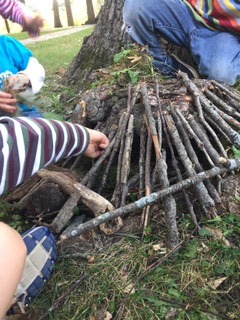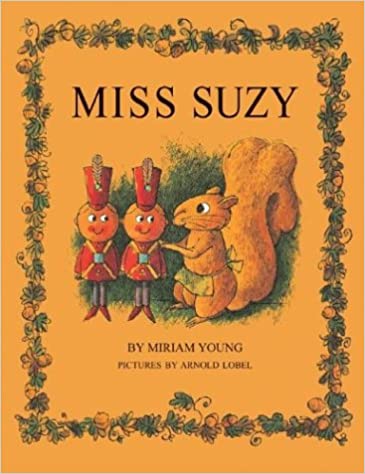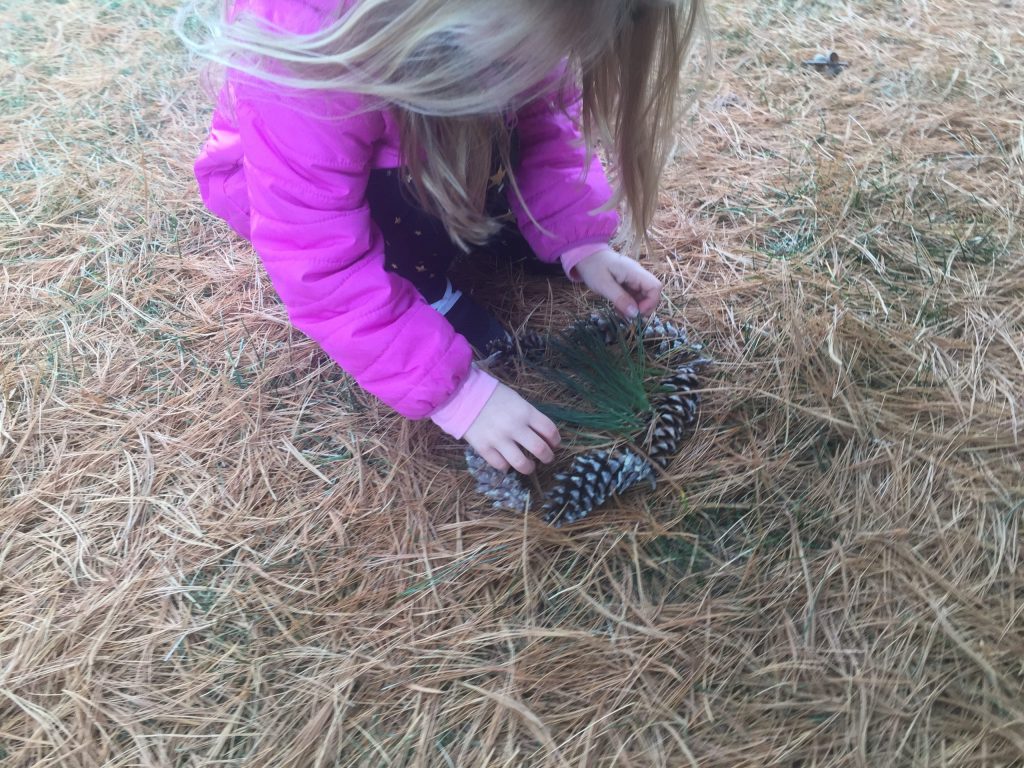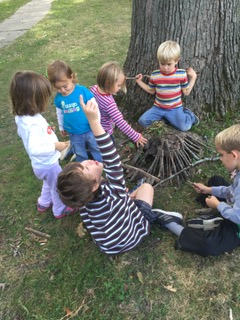Squirrely STEAM Learning
“If the squirrel comes down from this direction, we can trap him under here!” yells Elliot.
The playground equipment sits empty as Elliott, Harper and their fellow “squirrel trappers” congregate at the base of a towering oak tree in our neighborhood park.
The children have long been captivated by this venerable old oak, which has served as a stimulating “natural laboratory” for many mathematical and scientific inquiries disguised as play.
Today’s outdoor learning adventure may look like a simple game of make-believe, but complex learning is taking place as the children use their creativity, observation, planning and problem-solving skills—along with their emerging knowledge of math and science—to construct a squirrel trap at the base of their beloved tree.

“Wait! Wait! Are you trapping…Miss Suzy?”
Five-year-old Maya sounds slightly panicked as she blurts out the question. The urgency in her voice catches the squirrel trappers’ attention.
A booklover with a fertile imagination, Maya is worried about the beloved squirrel featured in our favorite fall book, Miss Suzy, by Miriam Young. This captivating story about a gray squirrel whose cozy home is invaded by a group of six red squirrels has been in our library since day one. If you haven’t read this classic, see if you can find it in your library. It’s an oldie, but a goodie. We have been reading this book to the children in our program for more than 30 years. Every autumn, without fail, I will hear a child say, “Hello Miss Suzy” to every squirrel we see. This charming literary tradition has been passed down through decades and generations in our Under the Gingko Tree Nature Classroom program!


“We aren’t trapping her, we are trapping the red squirrels,” the boys reassure Maya.
Relieved and intrigued, Maya joins the squirrel-trap design team. Soon, colorful leaves, acorns and other small seeds make their way into the trapping area. The older boys are shouting out orders to the younger trappers. “We need some sticks—about this long!” Elliott declares, using his hands to indicate the length of the sticks that will be needed. “And bark! We need some bark!”

The younger girls wander over to other tree trunks and begin to use their collections to create cozy squirrel homes like Miss Suzy’s. They seem content to leave the squirrel trapping to the boys. Three-year-old Lauren makes a squirrel nest by arranging pine cones in a circle on a bed of pine needles. From observing the upper branches of the tall trees that surround our school, Lauren knows that squirrel nests are round and full of leaves, acorns and possibly pine cones. These hands-on investigations are authentic learning experiences that the girls will remember and build on as they continue to hone their problem-solving skills.

Four-year-old Ava, our loose-parts aficionado, creates a home design all her own, using bark for the beds and acorns to represent the squirrels’ heads. She repurposes the acorn caps as bedside water bowls. Another acorn cap filled with tiny seeds and nuts becomes a food bowl for late-night snacking next to a “crackling campfire” consisting of a red leaf topped with stacked twigs. A green leaf becomes a staircase that the squirrels will use to exit their comfy abode.
We could knock out early learning standards galore just by studying the photo below! We find these delightful little creations all over our school grounds.

This fall, open the door to the possibility of using nature to create authentic, engaging and accessible science and math experiences through outdoor play. Throw away your “curriculum” stopwatch. If it’s snack time, hand out the snacks. Let them eat like pirates for the day. No one will die. No one will call the teacher police. If they do, I want you to whip out your school’s list of early learning standards and state your case. You hold the key! Let’s take play back for this generation of early learners! The fresh air will do us all good this fall. Stay safe, friends—and don’t forget to make time for learning through play!

I enjoyed how reading how Ava the four year old design the bed for the squrriels with the acorns and leaves and how she used them in making them a little table and used the acorn and leaf as well to do that as a patterns.
I like how the children can measure the different sized sticks and leaves to see which one is bigger and smaller.
I like how the children can put all the different colored leaves into different color categories. To collect their data on a chart.
Thats So Cute!! You also see leadership skills, especially when Elliott asks the kids to get the similar length sticks!!
I don’t recall making squirrel nests as a kid, I was more of a fairy fort child while my brothers were “hunters”
Sue Kozlowski
This is a great way to collect data and work together in a group.